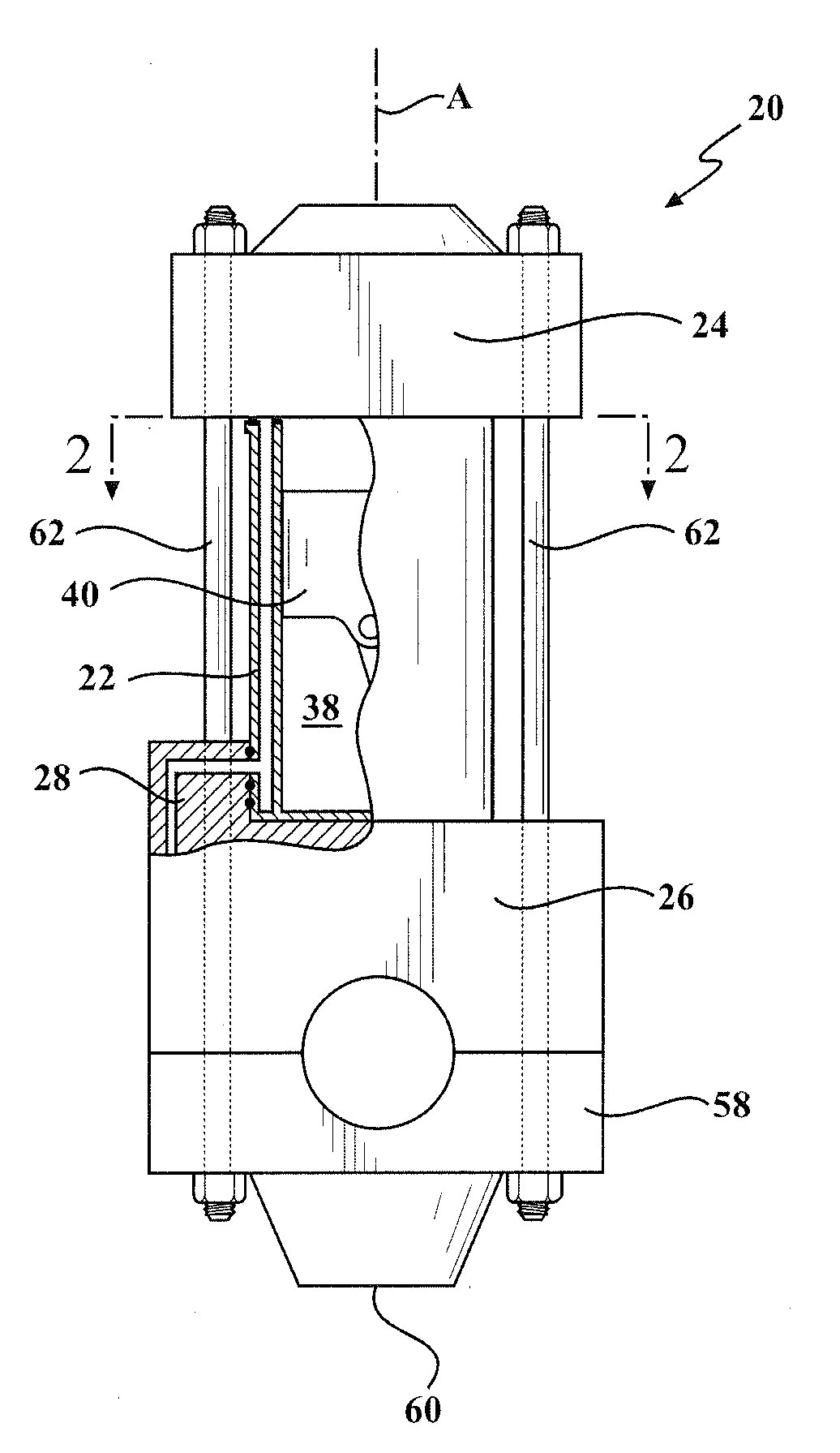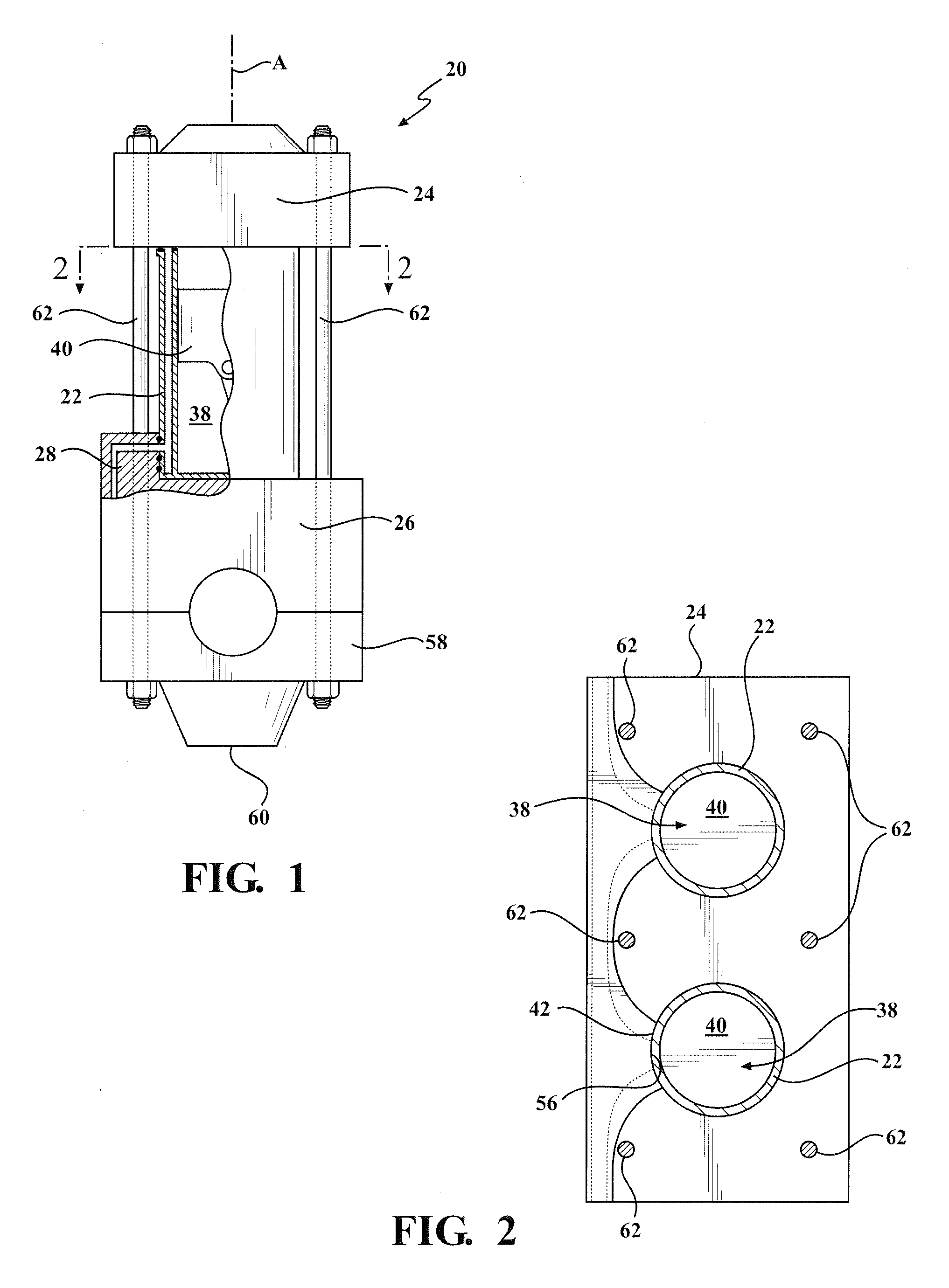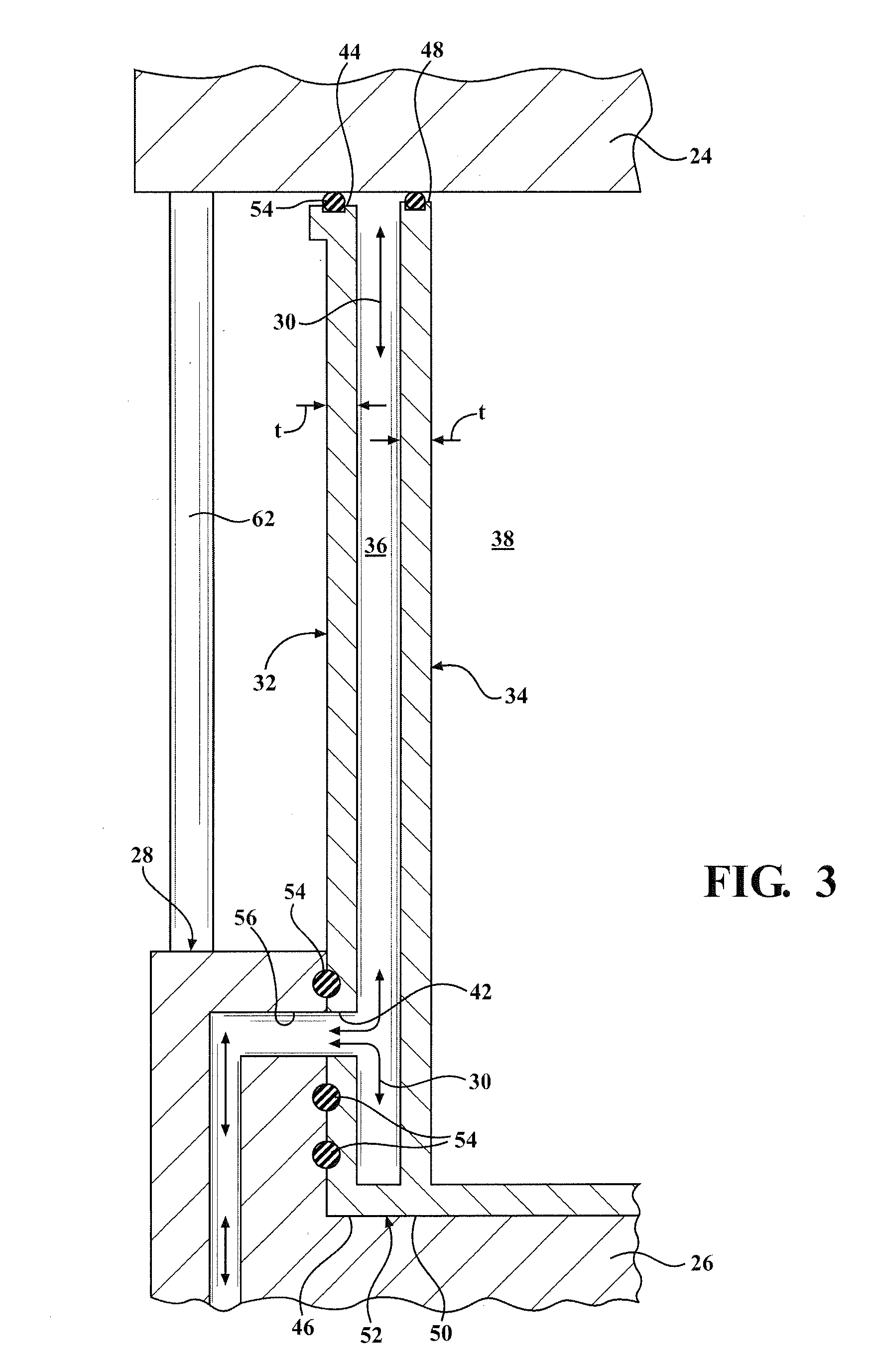Double wall self-contained liner
a self-contained liner and double-walled technology, applied in the direction of machines/engines, mechanical equipment, cylinders, etc., can solve the problems of reducing the overall affecting the engine, and requiring even more complex sculptural work. , to achieve the effect of reducing the total package size, cost and weight of the engine, and reducing the dead weigh
- Summary
- Abstract
- Description
- Claims
- Application Information
AI Technical Summary
Benefits of technology
Problems solved by technology
Method used
Image
Examples
Embodiment Construction
[0016]One aspect of the invention provides a robust engine assembly 20 for a gasoline or diesel internal combustion engine having a reduced total weight and efficient cooling, without an undesirable increase in fuel consumption or carbon dioxide emissions. The engine assembly 20 includes a double-wall cylinder liner 22 clamped between a cylinder head 24 and a crankcase 26. The engine assembly 20 also includes a manifold 28 disposed along a portion of the cylinder liner 22 for conveying cooling fluid 30 to or from the cylinder liner 22.
[0017]An exemplary engine assembly 20 including the double-wall cylinder liner 22, cylinder head 24, crankcase 26, and manifold 28 is shown in FIGS. 1-3. As shown, the engine assembly 20 is preferably designed without an engine block or cooling jacket, which significantly reduces the total weight of the engine.
[0018]In the exemplary embodiment, the cylinder liner 22 includes an outer wall 32 and an inner wall 34 presenting a cooling chamber 36 therebet...
PUM
 Login to View More
Login to View More Abstract
Description
Claims
Application Information
 Login to View More
Login to View More - R&D
- Intellectual Property
- Life Sciences
- Materials
- Tech Scout
- Unparalleled Data Quality
- Higher Quality Content
- 60% Fewer Hallucinations
Browse by: Latest US Patents, China's latest patents, Technical Efficacy Thesaurus, Application Domain, Technology Topic, Popular Technical Reports.
© 2025 PatSnap. All rights reserved.Legal|Privacy policy|Modern Slavery Act Transparency Statement|Sitemap|About US| Contact US: help@patsnap.com



